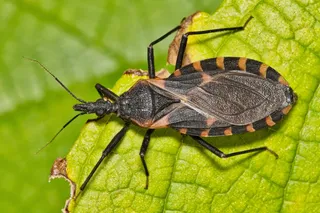Smallpox has haunted man for almost as long as we have been walking this earth. The variola virus that causes the deadly pox had been known to liquidate entire communities, towns, and cities since antiquity, stalking along trade routes and capitalizing upon human behavior and patterns of movement. Egyptian mummies unearthed from their tombs bear the pocked faces of fortunate survivors; Chinese emperors, Indian peasants, Russian Tzars, and Australian Aborigines - around the world, millions succumbed to virus in the centuries before the discovery of an effective vaccine. The eradication of smallpox in the late 1970s was one of man’s greatest achievements, the effective excision of a scourge that had haunted us throughout our history, and so it is interesting that there is an “Old World cousin” of smallpox, a mild-mannered viral relative that persists in the forests of central and western Africa, circulating among primates and rodents, producing an ...
A Tale of Two Pox
Explore the monkeypox outbreak origins and ties to smallpox vaccination efforts that emerged from wildlife trafficking in the U.S.
More on Discover
Stay Curious
SubscribeTo The Magazine
Save up to 40% off the cover price when you subscribe to Discover magazine.
Subscribe












